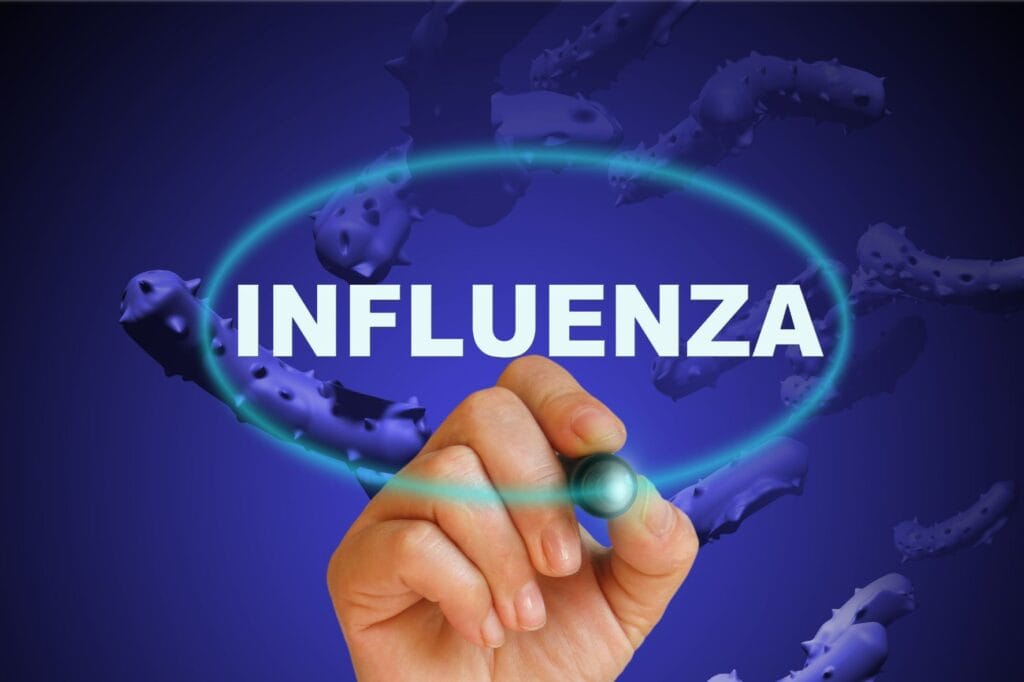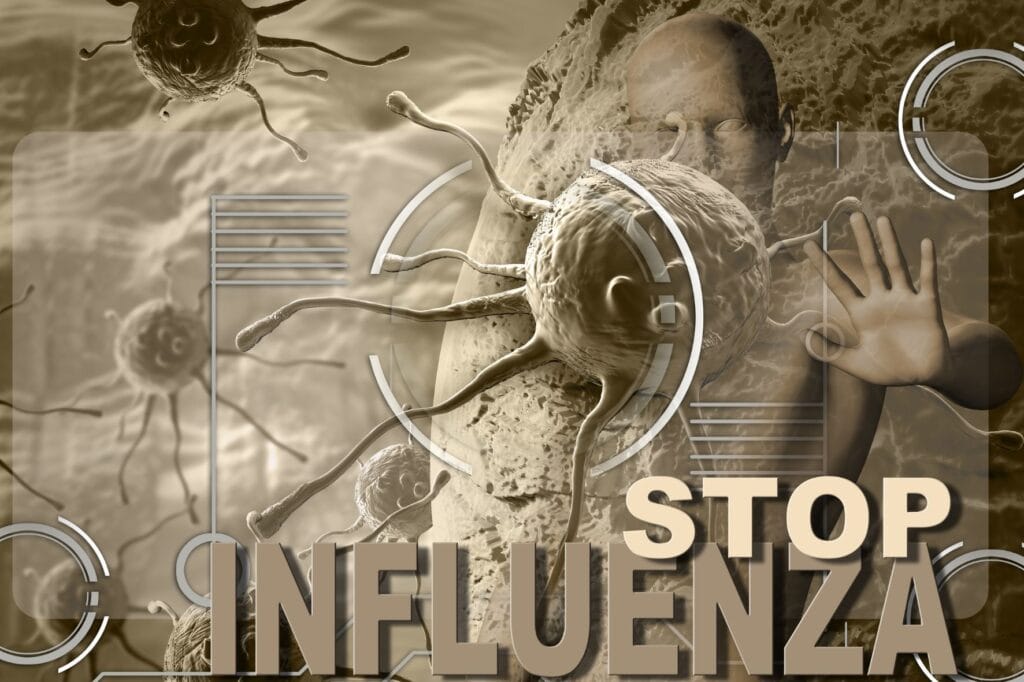Seasonal influenza poses a significant global health challenge, affecting approximately one billion people annually and leading to 3 to 5 million severe cases and 290,000 to 650,000 deaths worldwide.
To address this growing concern, the U.S. government established National Influenza Vaccination Week (NIVW) in 2005. This observance emphasizes the importance of flu vaccination as a critical tool in preventing illness and reducing the burden of influenza.
By raising awareness during Influenza Vaccination Week, individuals are encouraged to protect themselves, their families, and their communities from the potentially life-threatening consequences of the flu.
Table of Contents
Why Influenza Vaccination Week Matters

A Global Health Concern
Influenza impacts lives across the globe, disproportionately affecting vulnerable populations. Alarmingly:
- Nearly 90% of deaths from lower respiratory tract infections in children under five occur in developing countries.
- Influenza exacerbates health inequities, highlighting the urgent need for widespread awareness and vaccination campaigns.

A Timely Reminder
Influenza Vaccination Week serves as a timely reminder to get vaccinated ahead of peak flu season.
Vaccination helps to:
- Prevent severe flu-related complications.
- Reduce the spread of the virus in communities.
- Save lives, especially among high-risk groups.
All About Influenza: Understanding the Virus

Influenza, commonly known as the flu, is a seasonal acute respiratory infection caused by the influenza virus, which is part of the Orthomyxoviridae family and is classified as an RNA virus. It spreads through respiratory droplets, making it highly contagious.
Influenza A:
- Responsible for seasonal flu epidemics.
- Carries a high risk of complications.
- Has caused significant pandemics throughout history.
Influenza B:
- It primarily affects young children, particularly those under the age of five.
- Also contributes to seasonal flu epidemics.
Influenza C:
- Usually results in milder symptoms or none at all.
- Less of a concern for most people.
Influenza D:
- Primarily affects animals, particularly cattle.
- Does not typically infect humans.
From Pandemics to Vaccines: The Journey Of Influenza Vaccination Week
The history of influenza is comprehensive and stretches back centuries. In the modern era, the influenza A virus was first isolated in 1933, while the influenza B virus was discovered a few years later in 1936.
However, references to flu-like illnesses date back much further. In 412 BC, the Greek physician Hippocrates identified and described a highly contagious sickness with symptoms similar to influenza in his sixth book of “Epidemics.”
Key Historical Pandemics and Influenza Vaccine Milestone

First Worldwide Pandemic:
- Occurred between 1889 and 1892.
Second Pandemic (Spanish Flu):
- Took place between 1918 and 1920.
- Responsible for approximately 50 million deaths worldwide.
- It infected around 500 million individuals globally.
In addition to the well-known global pandemics of influenza, several other significant influenza epidemics and pandemic have occurred over the years.
Asian Flu (1957-1958): Caused 1 to 4 million deaths globally.
Hong Kong Flu (1968-1969): Led to up to 4 million deaths worldwide.
Russian Flu (1977–1979): Primarily affected younger populations.
Swine Flu Pandemic (2009-2010): Estimated fatalities ranged from 151,700 to 575,400.
Due to its severity, it is sometimes referred to as “the mother of all pandemics.”
Vaccine Milestones
The development of the first inactivated flu vaccine in 1940 marked a turning point in influenza prevention. Led by Jonas Salk and Thomas Francis, this innovation has saved millions of lives globally.
Recognizing Influenza Symptoms and Risks

Influenza presents a range of signs and symptoms that can vary in severity.
Common Symptoms:
- Fever, cough, headache and sore throat.
- Runny nose, fatigue, and muscle and joint pain.
While most of these symptoms typically subside within a week, it’s important to note that a lingering cough can last for two weeks or more.
Serious Symptoms:
- Breathing difficulties, chest pain, Dehydration and Confusion
- Severe vomiting, Seizures,and Fever Rash
Potential Complications:
- Pneumonia: Inflammation of the lungs.
- Neurological issues include Guillain-Barré syndrome, in which the immune system damages nerves.
- Renal Complications: Impairment of kidney function.
Risk of Co-Infections: Increased likelihood of bacterial co-infections, which can lead to:
- Sepsis: A life-threatening condition.
- Toxic shock syndrome.
While anyone can catch influenza, certain groups are more susceptible to infection and complications, They are:
- Pregnant women.
- Children under five.
- Older adults.
- Individuals with chronic health conditions or weakened immune systems.
- Individuals undergoing immunosuppressive treatments
Healthcare workers also face increased risk due to their constant exposure to the virus.
Management and Treatment: Things To Remember Other Than Influenza Vaccination Week

Effective influenza management includes:
Isolation: To prevent the infection from spreading, stay away from others.
Rest: Prioritize rest to aid recovery and boost immunity.
Hydration: Drink plenty of fluids to alleviate symptoms.
Medication Adherence: Follow prescribed treatments and take antivirals as directed.
Early Diagnosis: Seek prompt medical attention for early identification.
Communication: Stay in touch with healthcare providers to monitor symptoms.
By prioritizing these steps and communicating with healthcare providers, individuals can enhance recovery and reduce the risk of severe illness.
Cause of frequent pandemics and yearly vaccination
Despite the development of vaccines, influenza continues to pose a serious threat, with four major epidemics occurring globally since the vaccine’s introduction in the 1940s.
The virus’s ability to rapidly change and evolve its genetic components is a key factor in its persistence.
This rapid mutation process, known as antigenic shift and antigenic drift, makes it challenging to develop long-lasting vaccines.
What is Antigenic Shift and Antigenic Drift ?
Antigenic Shift: Major genetic changes in the influenza virus that can cause pandemics.
Antigenic Drift: Small genetic mutations over time that lead to seasonal epidemics.
Key Takeaway for Healthier Tomorrow

To effectively combat influenza, everyone aged 6 months and up, especially high-risk groups, should be vaccinated every year.
Staying updated with the latest vaccine is especially important during “National Influenza Vaccination Week.”, as it prepares you for the evolving strains of flu.
Influenza Vaccination Week is more than a reminder—it’s a call to action. By getting vaccinated, you protect yourself and those around you from severe illness. Together, we can reduce the impact of seasonal influenza and create healthier communities.
A Call For A Better Tomorrow
Join the movement during Influenza Vaccination Week!
Schedule your flu shot today, encourage others to do the same, and help spread awareness about the importance of vaccination.
Let’s work together to build a flu-free future. Share your thoughts or experiences in the comments below!





3 Comments
I appreciate the information shared here and the timely reminder to get vaccinated to stay healthy this season!”
Thank you! We appreciate your support and are glad you found the information helpful.